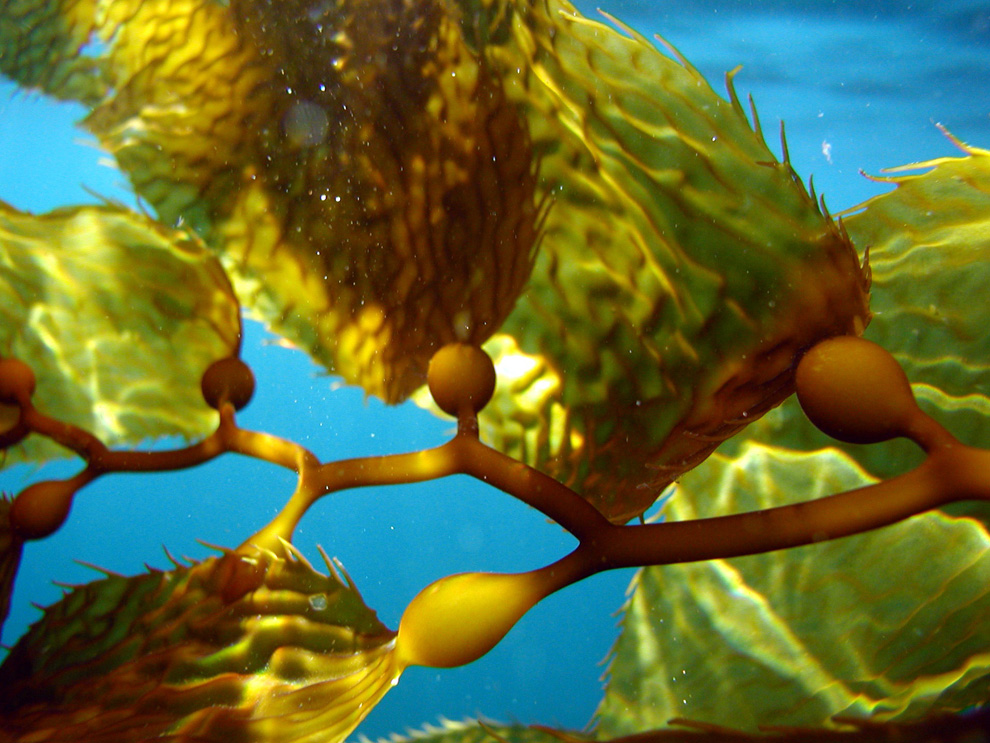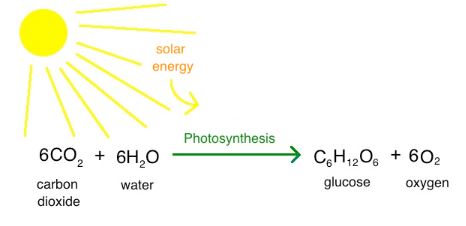Autotrophs and heterotrophs are two different classifications of organisms based on their nutritional needs. Autotrophs, also known as producers, are organisms capable of manufacturing their own food by harnessing energy from sunlight or chemical reactions. They are self-sustaining and form the foundation of ecosystems. On the other hand, heterotrophs, also known as consumers, are organisms that cannot produce their own food and instead rely on consuming other organisms, either autotrophs or other heterotrophs, for their energy needs.
What is Autotroph?
The term “autotroph” is derived from Greek roots, with ‘auto’ meaning self and ‘troph’ meaning food. Thus, autotrophs are organisms that are capable of creating their own food. They achieve this by using energy from the environment and inorganic compounds to synthesize organic compounds. Autotrophs are often referred to as “producers” in the food chain because they create food from inorganic substances, which is then consumed by heterotrophs, organisms that cannot produce their own food.

Types of Autotrophs
Autotrophs are primarily divided into two types based on their method of obtaining energy: photoautotrophs and chemoautotrophs.
Photoautotrophs
Photoautotrophs are organisms that use light energy, primarily from the sun, to convert inorganic materials into organic materials. This process is known as photosynthesis. Photoautotrophs include all green plants, algae, and certain types of bacteria. The presence of chlorophyll, a light-absorbing pigment, is a characteristic feature of photoautotrophs. This pigment enables these organisms to capture light energy, which is then used to convert carbon dioxide and water into glucose, a form of sugar that serves as an energy source.
Chemoautotrophs
Chemoautotrophs, on the other hand, are organisms that derive energy from chemical reactions. They utilize inorganic compounds such as hydrogen sulfide or methane as energy sources. These autotrophs are often found in environments that lack sunlight, such as deep-sea vents or underground habitats. Chemoautotrophs are usually bacteria or archaebacteria and include species like Acidithiobacillus ferrooxidans, a type of iron bacteria.
Modes of Nutrition
Autotrophs utilize a specialized mode of nutrition called autotrophic nutrition. This mode of nutrition involves the synthesis of organic compounds from inorganic substances. Autotrophs are capable of converting carbon dioxide and other inorganic molecules into complex organic molecules through various metabolic processes.
Autotrophic nutrition is an essential process as it forms the basis of energy flow in ecosystems. By producing their own food, autotrophs provide the energy and nutrients needed for heterotrophs to survive.
Autotrophic Nutrition
Autotrophic nutrition is the process by which autotrophs synthesize their own food using inorganic substances. This mode of nutrition allows autotrophs to convert carbon dioxide and other inorganic molecules into organic compounds, such as glucose, that serve as a source of energy and building blocks for their growth and development.
The two primary methods of autotrophic nutrition are photosynthesis and chemosynthesis. In photosynthesis, autotrophs use light energy to convert carbon dioxide and water into glucose and oxygen. Chemosynthesis, on the other hand, involves using chemical energy from inorganic compounds to produce organic compounds.
Both photosynthesis and chemosynthesis are crucial processes that drive the energy flow in ecosystems and sustain life on Earth.
Autotrophic Nutrition Equation
The process of autotrophic nutrition, particularly photosynthesis, can be summarized through the following equation:
6CO2 + 6H2O + light energy = C6H12O6 + 6O2
This equation shows that six molecules of carbon dioxide (CO2) react with six molecules of water (H2O) in the presence of light energy to produce one molecule of glucose (C6H12O6) and six molecules of oxygen (O2).

Examples of Autotrophs
Autotrophs exist in diverse forms across various ecosystems. Here are a few examples:
Plants
Green plants are the most common examples of autotrophs. They possess a pigment called chlorophyll in their cells, which captures light energy and initiates the process of photosynthesis. This process allows them to convert carbon dioxide and water into glucose, providing them with the energy they need to grow and reproduce.
Green Algae
Green algae is another example of photoautotrophs. Like plants, they utilize light energy to carry out photosynthesis. They play an important role in aquatic ecosystems, providing food and oxygen for a variety of organisms.
”Iron Bacteria” – Acidithiobacillus ferrooxidans
Acidithiobacillus ferrooxidans, a type of iron bacteria, is an example of a chemoautotroph. It derives its energy from the oxidation of ferrous iron, converting it into a form that can be dissolved in water. This bacteria plays a crucial role in the cycling of iron in the environment.
Origin of Autotrophs
Autotrophs are believed to be among the first life forms on Earth. Being able to produce their own food, they laid the foundation for the existence of other life forms. The first autotrophs were likely chemoautotrophs, which thrived in the absence of oxygen and relied on chemical reactions for energy. As the Earth’s atmosphere evolved, photoautotrophs, which utilize sunlight for energy, emerged and became more common.
The Role of Autotrophs in an Ecosystem
Autotrophs play a crucial role in ecosystems. As primary producers, they form the base of the food chain and are the primary source of energy for all other organisms. They convert inorganic substances into organic materials, which are then consumed by heterotrophs, including herbivores, omnivores, and carnivores.
Autotrophs also play a vital role in the carbon cycle. Through photosynthesis, they absorb carbon dioxide from the atmosphere and convert it into organic compounds, which are then transferred through the food chain. Additionally, oxygen, a byproduct of photosynthesis, is essential for the survival of aerobic organisms.
Energy Pyramid
The energy pyramid is a model that shows the flow of energy in an ecosystem. Autotrophs, being the primary producers, form the base of the energy pyramid. They capture and convert energy from the sun or chemical reactions into a form that can be used by other organisms. The energy then flows up the pyramid, being consumed and transformed by organisms at each trophic level.

Food Chain
In a food chain, autotrophs are the first link. They produce their own food, which is then consumed by primary consumers or herbivores. These, in turn, are eaten by secondary consumers or carnivores. Each step in this chain signifies a transfer of energy from one organism to another, with autotrophs serving as the primary source of energy.
Photosynthesis
Photosynthesis is the process by which autotrophs convert light energy into chemical energy. This energy is stored in the form of glucose, a simple sugar. The process of photosynthesis involves the absorption of light by chlorophyll, a pigment present in the cells of autotrophs. The light energy is then utilized to convert carbon dioxide and water into glucose and oxygen.
Cellular Respiration
Cellular respiration is a metabolic process in which organisms convert nutrients into energy. In autotrophs, this process is used to break down the glucose produced during photosynthesis into usable energy. The energy produced is stored in the form of adenosine triphosphate (ATP), which is used by cells to perform various functions.
Difference Between Autotrophs and Heterotrophs
Autotrophs and heterotrophs are two distinct types of organisms with different modes of nutrition. Let’s explore the key differences between them:
Autotrophs:
- Autotrophs are capable of producing their own food using inorganic resources.
- They convert carbon dioxide and other inorganic substances into organic compounds through processes like photosynthesis or chemosynthesis.
- Autotrophs are the primary producers in ecosystems and form the foundation of the food chain.
- Examples of autotrophs include plants, algae, and certain bacteria.
Heterotrophs:
- Heterotrophs are organisms that cannot produce their own food and rely on consuming other organisms for sustenance.
- They obtain energy and nutrients by feeding on autotrophs or other heterotrophs.
- Heterotrophs occupy higher trophic levels in the food chain, such as herbivores, carnivores, and omnivores.
- Examples of heterotrophs include animals, fungi, and most bacteria.
The main difference between autotrophs and heterotrophs lies in their ability to produce their own food. Autotrophs are self-feeders, while heterotrophs are dependent on external sources for their nutritional needs.
How Kunduz Can Help You Learn Autotrophs?
Kunduz is an educational platform that facilitates learning by providing a wide range of study materials, including detailed explanations and interactive learning tools. With Kunduz, you can delve deeper into the world of autotrophs and understand their role in the ecosystem, their different types, and the process of photosynthesis and cellular respiration. By leveraging Kunduz’s resources, you can enhance your understanding of autotrophs and their importance in sustaining life on Earth.
